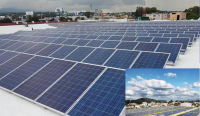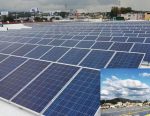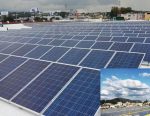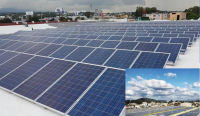PV Diesel Hybrid System
1. In many parts of the world, the power grid is either inadequate or non-existent. As a result, industrial consumers often secure their power supply through diesel generating sets. Electricity from diesel generators provides hundreds of gigawatts of power to industrial companies and countries around the world. However, rising fuel costs and additional transportation and storage costs can put their primary source of electricity at risk.
Grids in many parts of the world may be unreliable or unavailable. That’s why industrial companies and countries are turning to alternative energy sources. Solar energy is often the most economical alternative energy source in remote areas of the world’s Sun Belt. It makes sense to combine photovoltaic and diesel systems so that solar radiation, which is both abundant and free, can be profitably used as an energy source for industrial applications.
In recent years, the cost of photovoltaic systems and battery storage has fallen dramatically, making them an affordable source of energy for companies in remote areas. Using only PV systems and relying exclusively on solar radiation is not a safe option for industrial consumers, as PV production can be inconsistent. This is the reason why industrial companies are adopting PV diesel hybrid systems.
Let’s take a deeper look at what it is and how it works.
Working of PV Diesel Hybrid System
The combination of a diesel generator and the photovoltaic system is ideal for energy supply in areas where main power is unstable or non-existent. The additional use of solar energy reduces fuel consumption and thus saves costs. In addition, the integration of the photovoltaic system brings a sustainability factor to the system.
What is a PV Diesel Hybrid System?
A PV diesel hybrid system typically consists of a photovoltaic system, a diesel generator set, and intelligent management to ensure that the solar energy fed into the system is perfectly matched to the prevailing demand, with the diesel generator used to steadily fill the gap between the load and the power generated by the photovoltaic system. Battery storage can be used to enhance overall system performance to ensure the energy meets demand. Because diesel generators have limited capacity and inconsistent solar production, an energy management system can also be included to optimize the system.
How does a PV Diesel Hybrid System Work?
Basically, a PV system is a complement to a diesel generator set. It can provide additional energy when the load is high or reduce the fuel consumption of the generator set. The excess energy can be selectively stored in the battery, allowing the hybrid system to use more solar energy even at night.
When it is connected to the grid, this is a grid-connected system, and when it is separated, it is an off-grid system. In any case, these energy sources are used to complement each other. Whether the goal is to fill the gap caused by a grid failure or to reduce fuel expenses, a PV system can provide additional energy. Batteries can be used to store excess energy for later use.
What are the advantages of the PV Diesel Hybrid System?
Although the initial cost is higher than a system using diesel generators, PV systems can be amortized in as little as four to five years, depending on site and system size, and have lower operating costs.
In addition, PV systems are very flexible and can be expanded on a modular basis as energy demand grows. Photovoltaic diesel hybrid system has many advantages:
● Lower diesel costs – In the long run, solar power is much cheaper and more predictable than electricity generated by diesel generators.
● Fast return on investment – With a high potential for savings, the investment in a PV system will pay for itself in a very short time.
● Reduced CO 2 footprint – Generating solar energy reduces your carbon footprint.
● Uninterruptible power supply – When the grid fails or PV power is insufficient, the system continues to operate.
● No wasted energy – With the right equipment, the energy generated during the day is not wasted or fed back into the grid. It can be stored and used when needed.
To ensure the stable operation of the PV diesel hybrid system, optimal control of the integrated components is essential. This can only be achieved by using high-quality and sustainable equipment. Choose Zenergy.
What are the Components of a PV Diesel Hybrid System?
● Diesel generator sets
Diesel generators provide energy through fuel consumption. They are used most of the time in poor grid conditions (frequent outages) or at off-site locations as a backup or primary energy source. They are expensive to operate because all connected equipment requires constant fuel use, but their operating costs can even increase due to fluctuating fuel costs.
● Energy System Management (EMS)
EMS (Energy Management Software) is the core of the whole PV diesel hybrid system and is used to monitor, control, and optimize the performance of the power generation or transmission system, acting as a bridge between the PV system, the generating units, and the load. The EMS system not only ensures maximum safety but also minimizes CO2 emissions, fuel and maintenance costs, enabling users to monitor their installations and analyze current load and grid conditions.
● Photovoltaic systems
PV arrays are complete power generation units consisting of any number of PV modules and panels. PV panels are designed to absorb the sun’s rays and serve as an energy source for power generation. They use solar photovoltaic (PV) technology to convert solar radiation into DC electricity.
● Solar Inverter
A solar inverter is one of the most important components of a solar power system. It converts the variable direct current (DC) output of photovoltaic (PV) solar panels into 240V alternating current (AC).
● Battery
Batteries can be added to store the excess energy provided by the PV system. Therefore, it is





